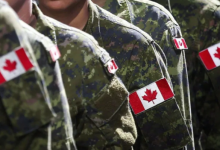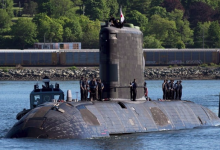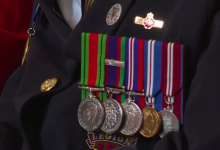Canada’s submarine fleet spent ‘zero days’ at sea last year: government documents
All four of Canada’s submarines were tied up last year for repairs and maintenance — news that has the opposition Conservatives questioning whether the Liberal government can keep the second-hand fleet afloat for another two decades.
In response to a written question before Parliament, the Department of National Defence said the boats “spent zero days at sea” in 2019, but three of the four would return to service at some point this year.
Over the year, HMCS Victoria, HMCS Windsor, HMCS Chicoutimi and HMCS Corner Brook were in various stages of repair and maintenance. They also went into drydock for long-term upgrades meant to ensure the submarines remain operational until the end of the next decade.
The Liberal government’s 2017 defence policy does not envision replacing the subs until 2040, but a written statement recently put before the House of Commons indicates the navy wants to keep the boats “operationally effective until the mid-2030s.”
Conservative defence critic James Bezan said the acquisition of new submarines is not something Canada can put off for 20 years — and the Department of National Defence and the Liberal government should begin seriously looking for replacements.
‘Do they have a plan?’
“The boats are getting older and need to be replaced sooner, but I’m not sure that’s resonating with the minister’s office or the [Prime Minister’s Office],” Bezan said.
“You have to ask yourself the questions. Do they have a plan to replace the submarines? And do they even care that we have submarines?”
The boats were docked last year after an intense sailing schedule for two of the four submarines over 2017 and 2018. HMCS Chicoutimi spent 197 days at sea helping to monitor sanctions enforcement off North Korea and visiting Japan as part of a wider engagement in the western Pacific. HMCS Windsor spent 115 days in the water during the same time period, mostly participating in NATO operations in the Atlantic.
Bezan said he is not questioning Canada’s need for submarines, pointing out that the navy has three coastlines to monitor, countries such as China and India are investing heavily to build up their own fleets and Russian submarine activity in the North Atlantic has surpassed Cold War levels.
“The best way to fight a submarine is with a submarine,” said Bezan. “There is a growing need for submarines to ensure our sovereignty around North America. It is also the best way to patrol our Arctic waters.”
Frigates first
The Liberal government has just started the process of replacing the country’s patrol frigates — the backbone of the navy — through an estimated $60 billion program that will roll out over the next two decades. Following the release of the federal government’s new defence policy in June 2017, a senior government official, speaking on background, cited the cost and complexity of rebuilding the surface fleet as justification for postponing the purchase of new submarines.
The commander of the navy, Vice-Admiral Art McDonald, said that after some early struggles, the submarine program has reached what he described as “a steady state,” and he’s convinced the boats can be operated safely for years to come.
“We know there’s still excellent life in the Victoria-class submarine. I’ve seen that personally,” McDonald told CBC News in a recent interview. “We’ll be able to operate those boats into the 2030s, but to do that we’ll have to continue with the routine investments we’ve made in them.”
Submarines are not cheap. Defence department figures tabled before Parliament show the navy has invested upward of $325 million in submarine maintenance, repairs and upkeep each year for the last two years.
The bulk of the cash went to repairing HMCS Corner Brook, which has been undergoing an extended upgrade since 2015 following an accident four years earlier when it smashed into the bottom of the ocean off British Columbia. The boat is one of the three Canadian subs expected to be back in the water this year for “contractor trials” meant to confirm the repairs.
The Chrétien government bought the submarines second-hand from Britain in 1998 at a cost of $750 million. Since then, National Defence has pumped billions into repairing and converting them for Canadian use.
The program suffered a major setback in 2004 when HMCS Chicoutimi caught fire on its maiden voyage, killing one sailor.
Almost a decade ago, navy planners started making a case for a replacement program. They told the former chief of the defence staff, the now-retired general Walt Natynczyk, that the military needed bigger, quieter submarines that could perform stealth missions, launch undersea robots and fire guided missiles at shore targets. The briefing was obtained in 2012 by The Canadian Press under access to information legislation.
A year later, the commander of the navy at the time, the now-retired vice-admiral Paul Maddison, told a Senate committee the navy meant to operate the boats until at least 2030.
CBC








Redes Sociais - Comentários